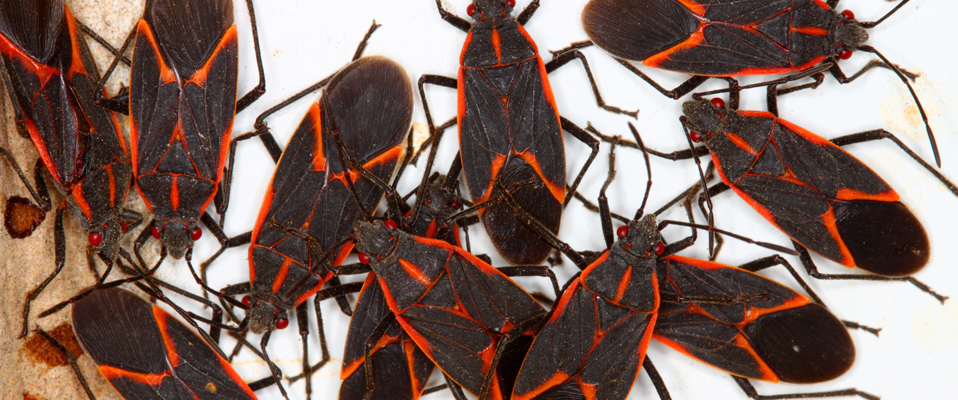Boxelder Bug
Download PDF
QUICK STATS:
Color:
Black with reddish or orange markings on dorsumShape:
Elongate-oval, somewhat flattened with head narrower than pronotumLegs: 6
Antennae: Yes
Size:
1/2 inch (11-14 mm)Region:
All as well as Southern Ontario
OVERVIEW:
Boxelder bugs get their common name from the fact that they are often found on and around boxelder trees. This species is native to the western states, but can be found from eastern Canada throughout the eastern United States, and west to eastern Nevada wherever boxelder trees are found.HABITAT
In autumn, boxelder bugs become gregarious and congregate on the south side of rocks, trees and buildings where the sun hits. After large masses gather, they migrate to nearby buildings or homes to overwinter. These pests tend to hide in small cracks and crevices in walls to insulate themselves from the cold winter temperatures. In late March to early April, adults leave their overwintering sites to return to their host trees for the warmer months.HABITS:
The boxelder bug population lives and thrives on maple and seed-bearing boxelder trees during the warmer months where they lay their eggs and feed on leaves, flowers and seeds. Occasionally, they will feed on the fruits of plum and apple trees.THREATS:
Boxelder bugs are not known to bite, but their piercing-sucking mouthparts can occasionally puncture skin, causing a slight irritation and producing a red spot similar to a mosquito bite. When crushed or handled roughly, boxelder bugs may leave a reddish orange stain from their fecal material that can result in discoloration of curtains, drapes, clothing, etc.


